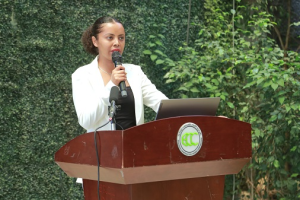
Born in in 1932 in Ankober, North Shewa, Afewerk Tekle was an Ethiopian artist, particularly known for his paintings on African and Christian themes as well as his stained glass.
Afewerk grew up under the Italian occupation during World War II. Following the war in 1947, he decided to help rebuild Ethiopia and was elected to travel to England to study mining engineering.
Afewerk had already shown talent as an artist as a child, decorating several walls in his home town. Whilst at boarding school in England, this talent was recognized and encouraged by his teachers. As a result, Afewerk was persuaded to switch from engineering and enroll in Central School of Arts and Crafts in London. He then went on to the Slade School of Art where he studied painting, sculpture and architecture.

Afewerk is remembered for many of his unique paintings. Among them are the glass paintings at the Africa Hall, the old building of the United Nations Economic Commission for Africa (UNECA) Headquarter in Addis Ababa.
The Africa Hall was built with the aim of ensuring heritage preservation and conservation of Africa Hall as a permanent symbol of Africa’s history and unity. Africa Hall is home to Ethiopian artist Afewerk Tekle’s most famous work, “Total Liberation of Africa,” a 150m stained glass triptych depicting the founding fathers of the OAU and images symbolizing African nations uniting to tackle poverty and disease.
Divided into three parts, the stained-glass artwork tells the story of “Africa Then”, “Africa Then and Now”, and “Africa Now and in the Future.” It covers an entire wall of Africa Hall, which houses the Economic Commission for Africa (ECA).
Afewerk won many international awards and recognitions from various countries and institutions. He passed away 8 years ago aged 80.
Sources: Wikipedia, Ethiopian Press Agency, AllAfrica.com, and United Nations Economic Commission for Africa.
The Ethiopian Herald February 8/2020
BY STAFF REPORTERS





